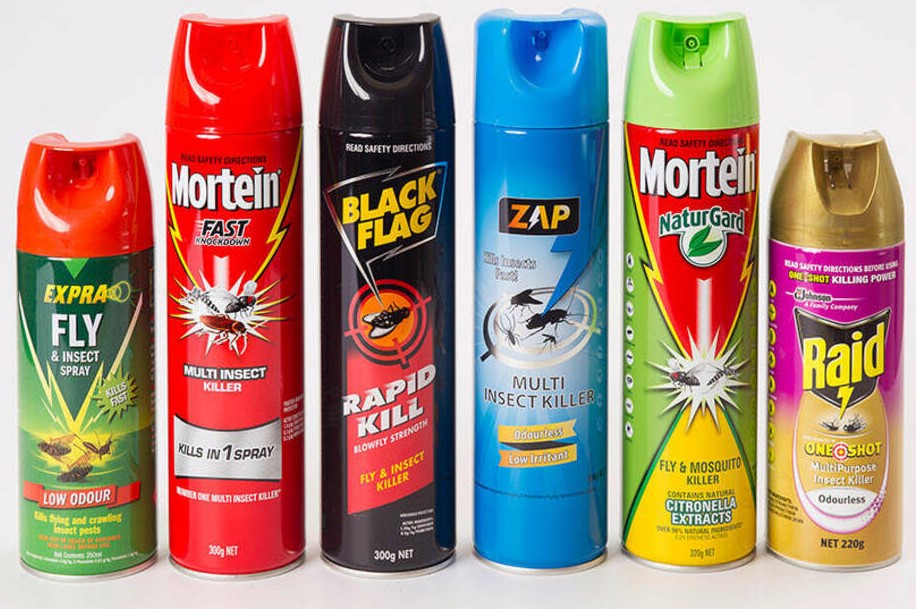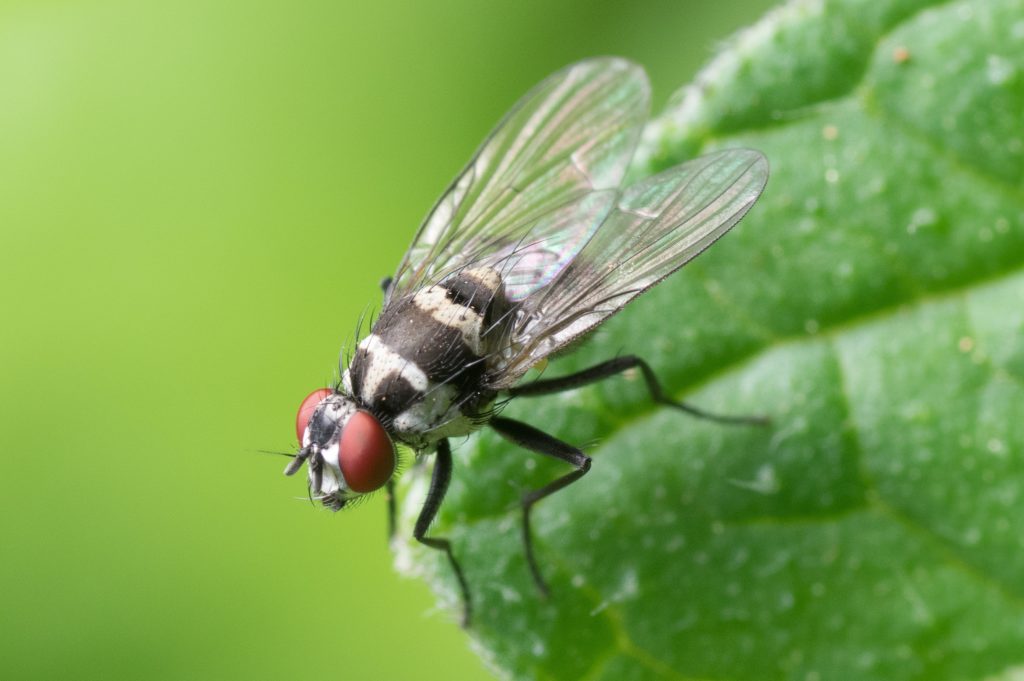
I learned this today. How does fly spray work? By blocking the insect from using its nerves to move its muscles.
There are two kinds of fly spray. There are repellents, which are sprays you apply to your body to stop insects landing on you and biting. Then there are insecticide fly sprays that kill the insect. Let’s look at both.
Insect repellents are more focused on insects that bite. Those would be insects such as mosquitoes and ticks. Those insects are generally attracted by body heat, carbon dioxide, and a chemical that we produce in our sweat. Insect repellents work by blocking an insect’s sense of smell and taste, which prevents it from locating people. There are natural insect repellents, but studies have shown that synthetic repellents are more effective.
Fly sprays are designed to kill insects. They are insecticide, which is made up of the words insect and cida, which means “killer” in Latin. It changed to cide, which you can find in many words, such as “suicide”, “fratricide”, “regicide”, and many other words about killing.
So, how does fly spray work? The spray contains chemicals called organophosphates that bind to an enzyme called acetylcholinesterase in the fly. The job of acetylcholinesterase is to break down acetyl choline, which flies use to transmit signals between their brains and their muscles. When acetyl choline is released, the fly’s muscles contract, and when the acetylcholinesterase removes the acetyl choline, the fly’s muscles relax. When the chemicals in the fly spray bind to the acetylcholinesterase, they stop it working. This means the acetyl choline can no longer be removed from the fly’s nervous system and the fly cannot relax its muscles. When its muscles are contracted it cannot fly or breathe and it suffocates.
Some flies can digest and break down the organophosphates, which is why larger bugs recover after a short time. To prevent this, some fly sprays contain another chemical that prevents the fly digesting it.
It takes a few seconds for the fly to suffocate. Larger flies can take a little longer. The flies probably don’t feel any pain, but there is no scientific proof for that. The conclusion comes from watching their behavior and thinking logically. Pain receptors in our brains help us avoid dangerous situations, but they also help us to learn from our experiences and avoid them in the future. Flies and insects operate on genetic instinct and evolving pain receptors would have no use for them. Insects that are injured tend to go on with their daily business without demonstrating any changes, which would indicate that they don’t experience pain.

Is fly spray harmful for humans? We also use the enzyme acetylcholinesterase which breaks down acetyl choline in our brains and nerves as well. If the spray is lethal to flies, shouldn’t it do the same thing in our bodies? The reason it obviously doesn’t is because of our body size. When you spray a fly, the majority of the spray goes over the fly, and it inhales a large enough dose to be lethal. We also inhale the spray, but we are so much larger than a fly that the organophosphates go into our blood stream and never reach the areas that they need to go to in order to kill us. Our liver removes them far too quickly. However, that isn’t to say that fly spray couldn’t be dangerous, it just means that you would have to inhale a lot of it for a long period of time to do any damage. It can be dangerous to smaller pets.
Insecticides have been around for thousands of years. Elemental sulfur was dusted on crops in Mesopotamia 4,500 years ago. Poisonous plants were used to kill insects in Rigveda about 4000 years ago. By the 15th century AD, arsenic, mercury and lead were being used. These kill insects, but they are also pretty harmful to the farmers and the people eating the crops. By the 17th century, farmers were using nicotine sulfate extracted from tobacco leaves. In the late 18th and early 19th centuries, the increase in population, the industrial revolution, and the agricultural revolution brought more research into pesticides. Pyrethrum was extracted from chrysanthemums. It is still used in some places. In the 1950s, DDT (Dichlorodiphenyltrichloroethane) was discovered, but it was found to be harmful to people and fell out of use. In 1975, organophosphates, which are used today, were discovered.
The first aerosol insect spray was invented in 1940 for use in World War 2. A lot of troops had trouble with insects in tropical areas. Malaria was a large problem. A lot of research money was pumped into insect repellents and insecticides. After the war, they became available to the general public and were quickly popular. The first aerosol produced in Australia was a fly spray, in the 1950s.
So, how do fly sprays work? They contain a chemical that prevents the fly from relaxing its muscles and it suffocates in a few seconds. And this is what I learned today.
http://npic.orst.edu/factsheets/repellents.html
https://www.theparisreview.org/blog/2014/11/17/a-brief-history-of-insect-control/
https://en.wikipedia.org/wiki/Pesticide#Development
https://en.wikipedia.org/wiki/Insecticide
https://en.wikipedia.org/wiki/Fly_spray
https://naldc.nal.usda.gov/download/IND43893975/PDF
https://www.theparisreview.org/blog/2014/11/17/a-brief-history-of-insect-control/
https://www.aerosol.com.au/about-aerosols/aerosol-history
